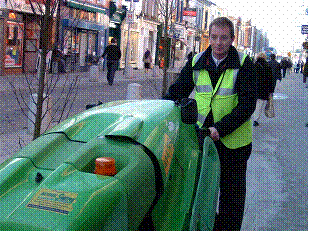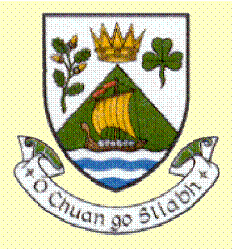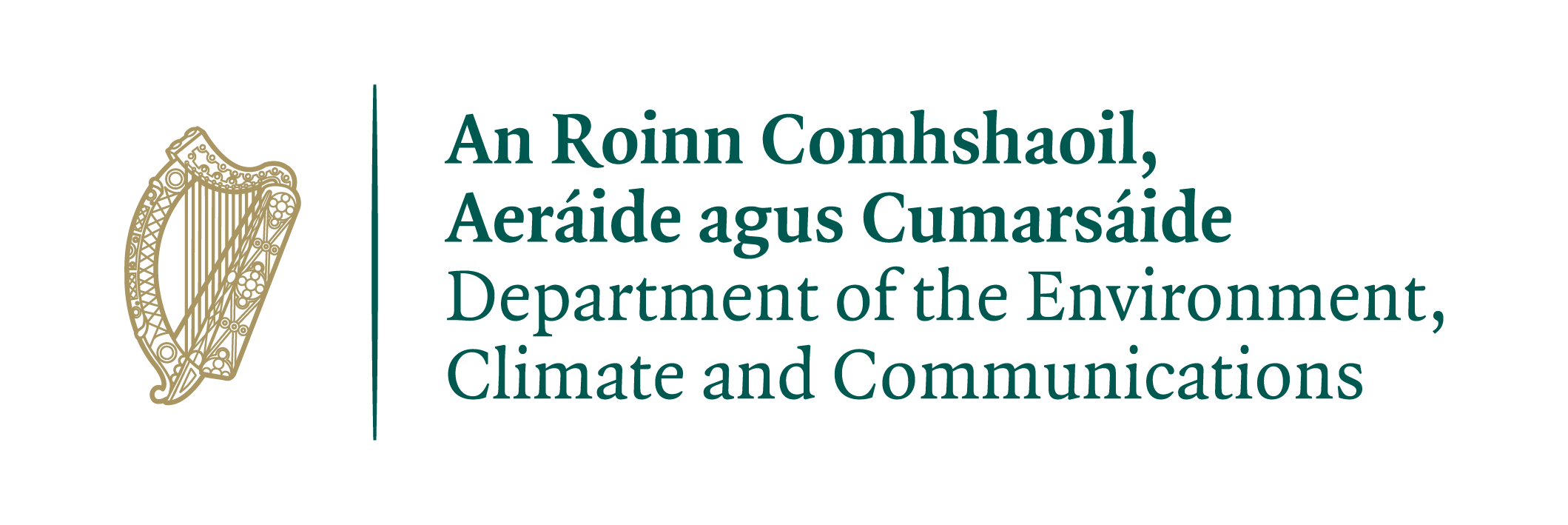Introduction
 Dún Laoghaire-Rathdown County Council’s administrative area stretches from Bray on the south to the borders with South Dublin County Council at Rathfarnham on the west and Dublin City Council on the northern boundary. It stretches from the mountains to the sea and has a population of over 191,000.
Dún Laoghaire-Rathdown County Council’s administrative area stretches from Bray on the south to the borders with South Dublin County Council at Rathfarnham on the west and Dublin City Council on the northern boundary. It stretches from the mountains to the sea and has a population of over 191,000.
Prior to the commencement of the Litter Pollution Monitoring Surveys, teams from the Environment Department visited schools to give talks on litter awareness and to promote anti-litter initiatives. This, together with the appointment of six Litter Wardens to enforce the Litter Pollution Act had a major impact on the cleanliness of the county.
Phase 1
In September, 2000 three Litter Wardens in conjunction with staff in the Environment Department commenced visual and written surveys of the county to identify the Potential Litter Generators. For this purpose, the District Electoral Divisions were used as a basis for recording information and ensuring there all areas were covered in the survey. The information was recorded on pre-printed sheets and was later transferred into the GIS database provided by the LGCSB. There were problems encountered when trying to have the gazetteer as a search option and this delayed the input of the information and the subsequent implementation of the system. The Local Government Computer Services Board in conjunction with the Council’s I.T. Section rectified the problem by working on the geodirectory table.
Phase Two
The Litter Wardens in conjunction with a student engineer carried out the Benchmark Litter Pollution Surveys at 125 locations during the summer of 2002. This phase of the survey proved time consuming as the areas to be covered were diverse from housing estates, industrial estates to railway stations, beaches and scenic mountain areas. However, it was very valuable to have this information to hand so that a sustained programme of works could be drawn up to tackle litter in the county.
In order to enable comparisons to be made and progress recorded, the 12 Litter Quantification Surveys were carried out by the Litter Wardens and student engineer during the summer of 2003. Surveys covered a 50m. stretch over which litter was counted except in the case of cigarette ends and chewing gum, which are counted for 10m. and multiplied by 5 before entering the data. This survey highlighted the amount of litter that was deposited by pedestrians and passing motorists and in particular cigarette litter. The Litter Wardens were requested to pay particular attention to areas such as outside shopping centres and DART stations where the problem appeared to be most evident.
Conclusion
The survey identified the diversity of potential litter black-spots. The GIS identified the location of existing litter bins in the county and highlighted the need for extra bins at particular locations. Extra resources were redeployed to street sweeping and two automatic sweepers and a pressure washer were purchased to tackle litter in the county’s urban areas.
 A Litter Action Plan was produced based on the results of the survey. The Plan recognises that the problem of litter will not be eradicated unless a multi-dimensional approach is taken. It is based on extensive consultation with the public and private sectors and endorses multi-sectoral action as the key to combating litter through a more focused and intensive action programme mainly at local level.
A Litter Action Plan was produced based on the results of the survey. The Plan recognises that the problem of litter will not be eradicated unless a multi-dimensional approach is taken. It is based on extensive consultation with the public and private sectors and endorses multi-sectoral action as the key to combating litter through a more focused and intensive action programme mainly at local level.
Two Litter Free Zones were introduced and a Charter was drawn up involving businesses, local residents, schools and the Council where everyone involved accepts responsibility for action. The Council introduced a Wheeled Bin system for refuse collection which substantially reduced the amount of litter resulting from bags being torn by animals.
In conjunction with the Tidy District competition, assistance was provided to local community groups by way of bags, gloves and litter pickers. Tenant training courses
were set up by the Council’s Housing Department involving all new tenants who were made aware of their responsibilities in relation to litter prevention. A Litter Free Phone was installed where members of the public can report incidents of dumping or fly-tipping.
Maura Murphy,
Dún Laoghaire-Rathdown County Council,
Tel. 01 2054817


